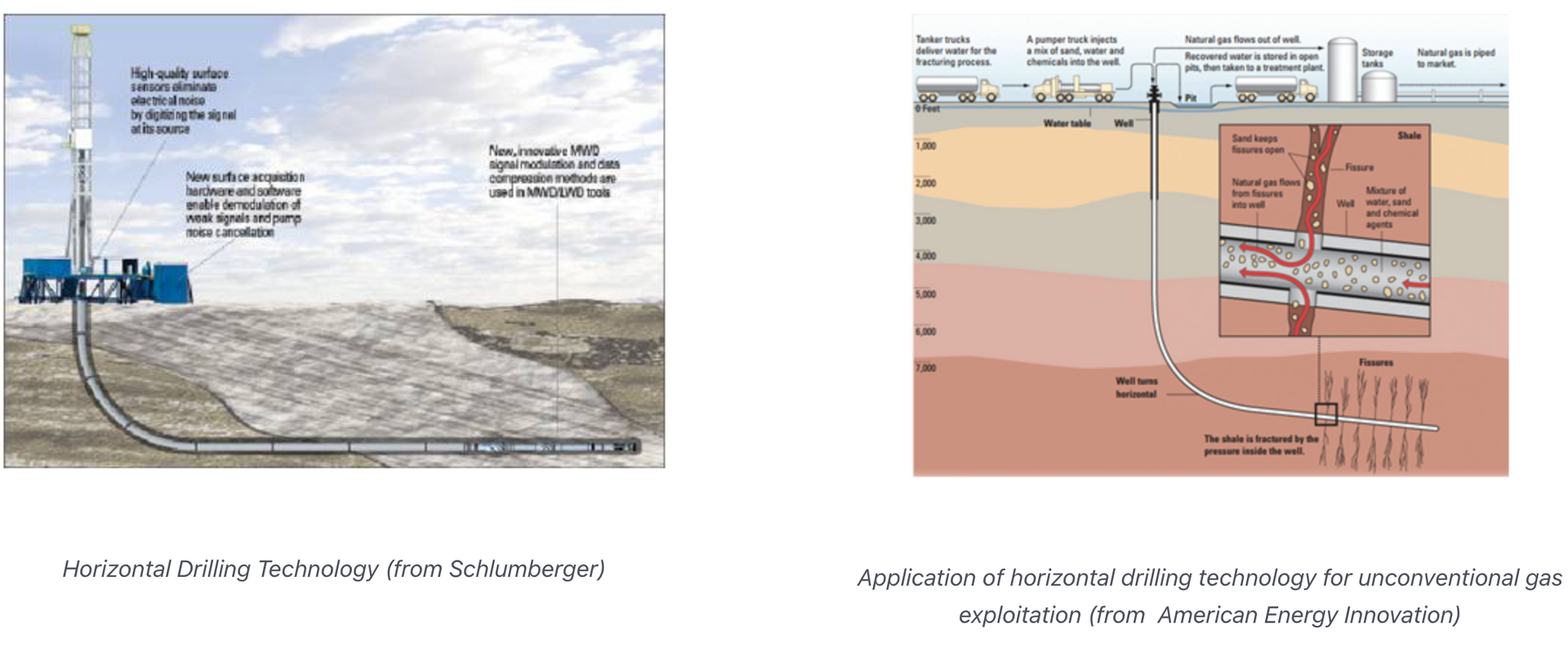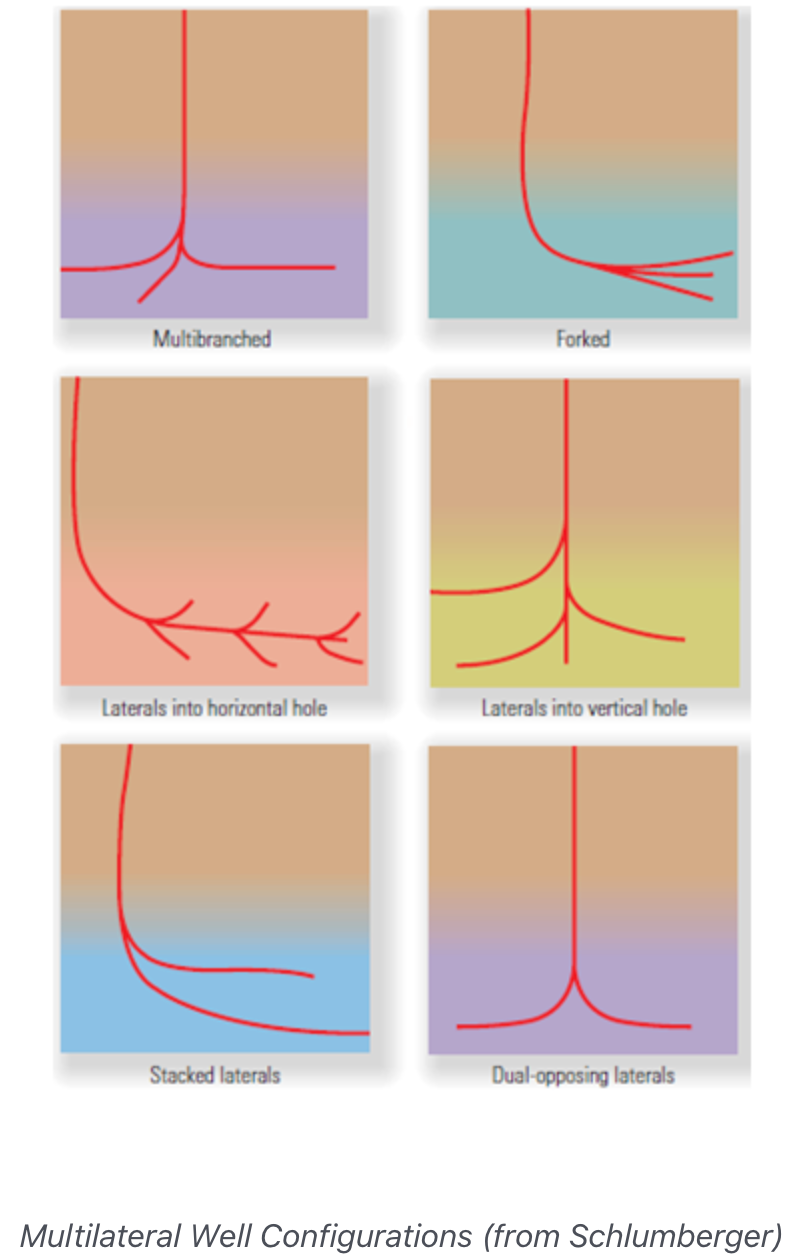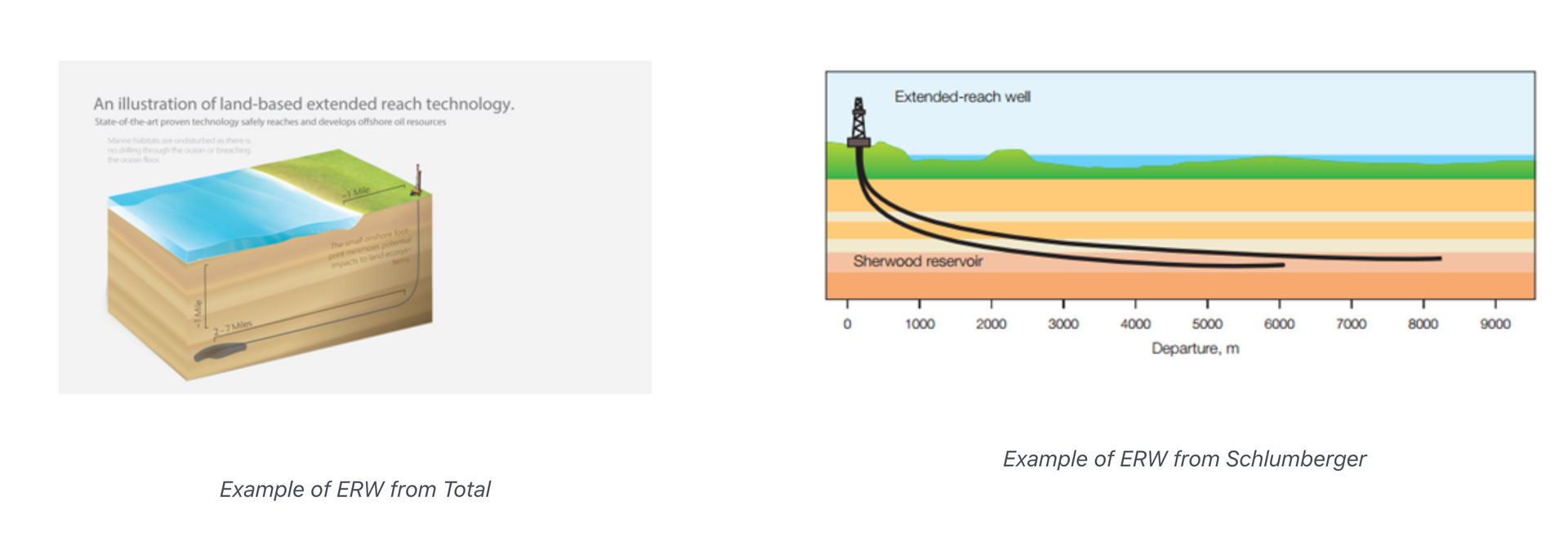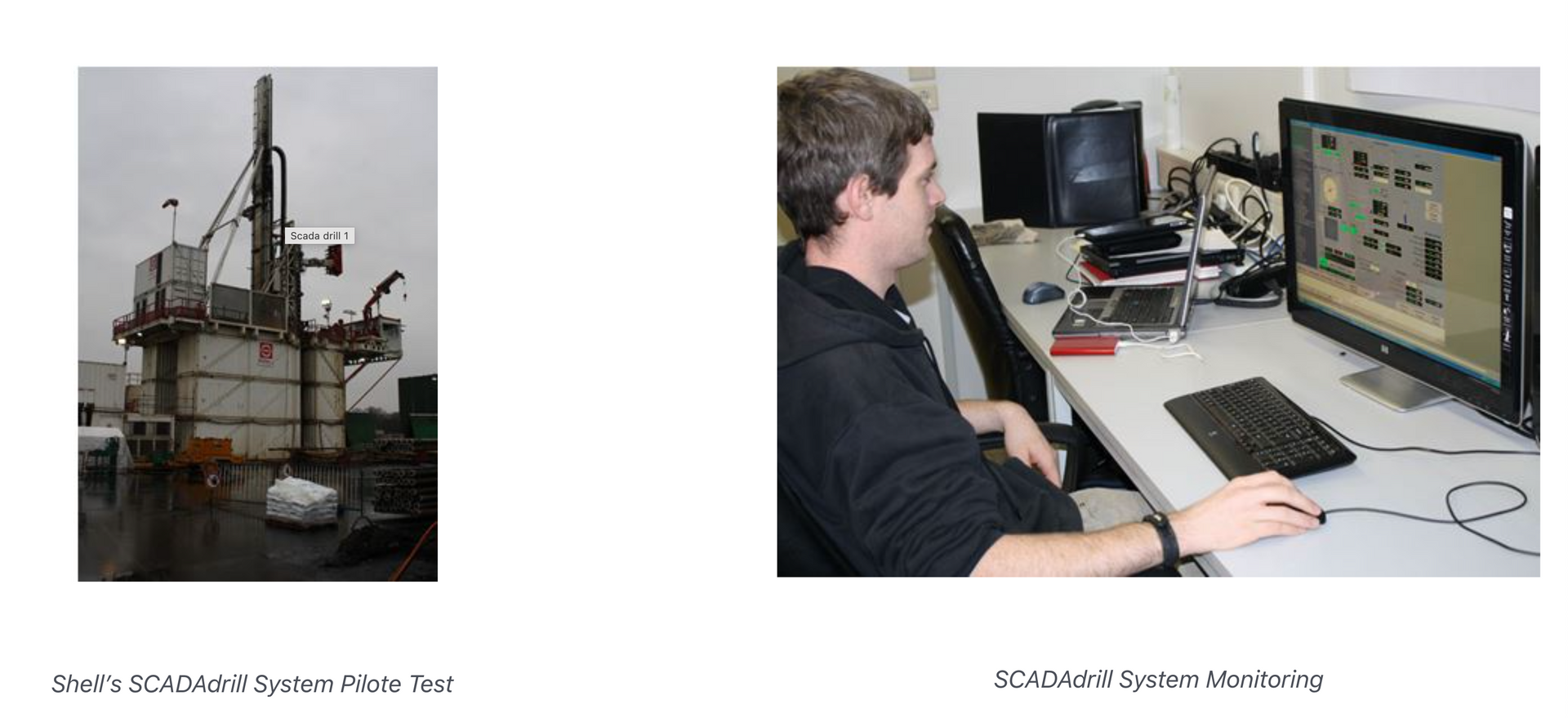Advances in technologies used for well drilling and completion have enabled the energy industry to reach new sources of oil and natural gas to meet rising demand around the world.
New technologies have also helped reduce the environmental impact of energy production by allowing more oil and gas to be produced with fewer wells.
Advances in technologies will play a critical role in meeting global energy demand because they enable the discovery of new resources, access to harsh or remote locations and the development of challenged reservoirs that previously were not economic to produce.
Well completion is the final step of the drilling process, where the connection to hydrocarbon-bearing rock is established.
Again, advances in technology have enabled more oil and natural gas to be recovered from the length of each well, improving production and reducing the environmental footprint of energy production.
For example, by combining extended reach drilling capability with advanced stimulation technology, oil companies can optimize how and where stimulation fluid interacts with rock, allowing sustained production rates along the length of the wellbore.
Companies are pushing completions in excess of 3,000 meters (9,842 feet) in length, compared to a typical completion of 30 meters a couple of decades ago.
These types of drilling and completion technologies have also enabled the recent growth in production from shale and other unconventional oil and gas reservoirs in many parts of the world, using a combination of hydraulic fracturing and horizontal, extended reach drilling.
Some examples of advancements in drilling technology are presented below:
Horizontal Drilling
Horizontal drilling is a directional drilling process aimed to target oil or gas reservoir intersecting it at the “entry point” with a near-horizontal inclination, and remaining within the reservoir until the desired bottom hole location is reached.
While the construction of a directional well often costs much more than a conventional well, initial production is greater of a conventional well.
Horizontal drilling provides more contact to a reservoir formation than a vertical well and allows more hydrocarbons to be produced from a given wellbore.
For example, six to eight horizontal wells drilled from one location, or well pad, can access the same reservoir volume as 16 vertical wells.
Using multi-well pads can significantly reduce the overall number of well pads, access roads, pipeline routes and production facilities, minimizing habitat disturbance, impacts to the public and the overall environmental footprint.
Horizontal wells are usually drilled to enhance oil production and in some situations the improvement may be dramatic – enabling development of a reservoir which would otherwise have been considered uneconomic.
There are many kinds of reservoir where the potential benefits of horizontal drilling are evident:
- in conventional reservoirs
- Thin reservoirs; Reservoirs with natural vertical fractures; Reservoirs where water (and gas) coning will develop; thin layered reservoirs; heterogeneous reservoirs;
- in unconventional reservoirs
- shale gas/oil, tight gas/oil, CBM, heavy oil, oil sands, etc
The initial vertical portion of a horizontal well is typically drilled using the same rotary drilling technique that is used to drill most vertical wells, wherein the entire drill string is rotated at the surface (the drilling of vertical sections is also possible by the use of downhole motor just above the bit, like the VertiTrak or TruTrak, where only the bit rotate while the drilling string remains firm).
From the kickoff point to the entry point the curved section of a horizontal well is drilled using a hydraulic motor mounted directly above the bit and powered by the drilling fluid.
Steering of the hole is accomplished through the employment of a slightly bent or “steerable” downhole motor (today the technology of directional drilling has improved by the use of the “RSS: Rotary Steerable System” that permit to steer an hole continuing the rotation of the drilling string. The RSS increase the safety and the drilling efficiency).
Downhole instrument packages that transmit various sensor readings to operators at the surface are included in the drill string near the bit.
Sensors provide the azimuth (direction versus north) and inclination (angle relative to vertical) of the drilling assembly and the position (x, y, and z coordinates) of the drill bit at all times.
Additional downhole sensors can be, and often are, included in the drill string, providing information on the downhole environment (bottom hole temperature and pressure, weight on the bit, bit rotation speed, and rotational torque).
They may also provide any of several measures of physical characteristics of the surrounding rock such as natural radioactivity and electrical resistance, similar to those obtained by conventional wire line well logging methods, but in this case obtained in real time while drilling ahead.
The information is transmitted to the surface via small fluctuations in the pressure of the drilling fluid inside the drill pipe.

Multilateral Drilling
Sometimes oil and natural gas reserves are located in separate layers underground and multilateral drilling allows producers to branch out from the main well to tap reserves at different depths.
This increases production from a single well and reduces the number of wells drilled on the surface.
A multilateral well is a single well with one or more wellbore branches radiating from the main borehole.
It may be an exploration well, an infill development well or a reentry into an existing well.
It may be as simple as a vertical wellbore with one sidetrack or as complex as a horizontal, extended-reach well with multiple lateral and sublateral branches.
General multi- lateral configurations include:
- multibranched wells, forked wells, wells with several laterals branching from one horizontal main wellbore, wells with several laterals branching from one vertical main wellbore, wells with stacked laterals, and wells with dual-opposing laterals.

These wells generally represent two basic types:
- vertically staggered laterals and horizontally spread laterals in fan, spine-and-rib or dual-opposing T shapes.
A successful multilateral well that replaces several vertical wellbores can reduce overall drilling and completion costs, increase production and provide more efficient drainage of a reservoir. Furthermore, multilaterals can make reservoir management more efficient and help increase recoverable reserves.
Regardless of the level of complexity, multi- lateral wells today are drilled with state-of-the art directional drilling technology, but there is always a certain risks ranging from borehole instability, stuck pipe and problems with overpressured zones to casing, cementing and branching problems.
Advantages of multilateral systems increasingly outweigh the disadvantages.

Multilateral wells configuration enhance productivity.
In shallow or depleted reservoirs, branched horizontal wellbores are often most efficient, whereas in layered reservoirs, vertically stacked drainholes are usually best.
In fractured reservoirs, dual-opposing laterals may provide maximum reservoir exposure, particularly when fracture orientation is known (From Schlumberger Oilfield review)
Extended Reach Drilling
An extended-reach well is one in which the ratio of the measured depth (MD) vs. the true vertical depth (TVD) is at least 2:1.
Extended-reach wells are expensive and technically challenging, however, they can add value to drilling operations by making it possible to reduce costly subsea equipment and pipelines, by using satellite field development, by developing near-shore fields from onshore, and by reducing the environmental impact by developing fields from pads.
Extended Reach Drilling allows producers to reach deposits that are great distances away from the drilling rig and this help producers tap oil and natural gas deposits under surface areas where a vertical well cannot be drilled, such as under developed or environmentally sensitive areas.
The current world record (around 2013) for the longest measured depth ERD well is the Chayvo Z-42 well (Exxon Neftegas Limited, Sakhalin Island, Russia) with a measured depth of 41,667 ft. and horizontal departure of 38,514 ft.
Offshore, the use of extended reach drilling allows producers to reach accumulations far from offshore platforms, minimizing the number of platforms needed to produce all the oil and gas.
Directional control, hole cleaning. torque and drag, and casing flotation play a fundamental role with ERW.
Drilling in the sliding mode results in several inefficiencies that are compounded by extreme distances. The motor must be oriented and maintained in a particular direction while drilling to follow the desired path. This orientation is achieved through a combination of rotating the drill- string several revolutions and working the pipe to turn it to the desired direction.
At several km far, the pipe may need 15 to 20 turns at surface just to turn the tool once downhole, because the drillstring can absorb the torque over such a long distance.
After the tool is positioned, drillstring torque is required to hold the motor in proper orientation against reverse torque created by the motor as the bit drills.
Geosteering is essential – and the primary components of the GeoSteering tool are a steerable motor with an instrumented section and a fast wireless telemetry system that passes data to the MWD system higher up in the BHA.
The instrumented sub is built into the motor near the bent housing which is typically about 1.5 m above the bit.
Packaged in the sub are directional and petrophysical sensors, electronics for control and telemetry and batteries for power.
Inclinometers provide inclination data at the bit in both a survey and continuous mode.
Above the GeoSteering tool, a stabilizer with an adjustable gauge allows the directional driller to change the directional characteristic of the BHA in rotary mode.
Today, as the Horizontal Drilling, also the Extend Reach Drilling use the technology of the “RSS: Rotary Steerable System” that permit to steer an hole continuing the rotation of the drilling string with an improvement of the safety and the drilling efficiency.
Moreover, the selection of a drilling fluid must balance a number of critical factors.
The fluid must provide
- a stable wellbore for drilling long open- hole intervals at high angles, maximize lubricity to reduce torque and drag, develop proper rheology for effective cuttings transport, minimize the potential for problems such as differential sticking and lost circulation, minimize formation damage of productive intervals.
Pipe rotation is another critical factor in hole cleaning.
The objective of the hole- cleaning program in ERW is to improve drilling performance by avoiding stuck pipe, avoiding tight hole on connections and trips, maximizing the footage drilled between wiper trips, eliminating backreaming trips prior to reaching the casing point and maximizing daily drilling progress.
Automated drilling
Automated drilling is one of the oil industry’s most important innovation targets.
The sources now being tapped, such as shale gas and coal-bed methane, require a very large number of wells, and automating the drilling process would be an obvious way to keep the costs under control, and also gets around a problem which many sectors of engineering are experiencing
Automated drilling would be faster, more efficient, and safer, as it reduces the number of workers on site.
In this R&D sector, Shell has developed an automated drilling system called SCADAdrill (SCADA being the acronym for supervisory control and data acquisition, a type of software used for automated factory and process control), and is a component of a new well manufacturing system that it is currently trialing in Europe and North America.


Based around a central hub, the well manufacturing system uses three different types of drilling rigs mounted on trucks to construct the complex of wells needed to extract gas from shale or coal bed reserves. One rig drills the ‘top hole’, the vertical upper portion of the well through which gas is extracted.
Two intermediate bores are then drilled, starting at an angle and proceeding horizontally to meet at the base of the top hole; these are used to dewater the rock and encourage the gas to flow.
The third type of rig installs the tubing and downhole pumps needed to operate the well.
The SCADAdrill system is used on the horizontal dewatering bores.
Through sensors mounted on the drillbit, the system monitors the trajectory of the drill and its performance as it travels through the site geology, and controls its path to ensure that it meets the top hole precisely.
Automating drilling takes in three stages of autonomy:
- The first is to mechanise the drilling equipment, such as the machinery which connects lengths of drill pipe.
- The second is to monitor torque and weight on the drill bit, and control these parameters to achieve optimum rate of penetration and the route of the bore-hole.
- The third level is to automate the entire process, including the speed of the pumps controlling drilling mud.
The SCADAdrill computer system connects to the existing instruments and controls of a drilling rig.
It can thus operate the rig machinery and monitor all aspects of the drilling process.
In fact, the monitored parameters serve as the feedback control for the rig machines. In this way the orientation of the borehole is constantly checked as it is being drilled, helping to ensure that the well is drilled efficiently and that it reaches its target.
Although it is capable of working without human supervision, SCADAdrill allows well engineers to monitor the rig remotely. If necessary, control can be taken over from the machine.

Existing controls and sensors on rigs serve as interfaces for SCADAdrill, enabling the computerised system to regulate mud pumps and manipulate top drives and hoists.
Shell is also developing a new type of casing tube to line wells, which would make the drilling process far simpler by allowing the entire well to be drilled with the same diameter.
Currently, wells are drilled using a stage by stage process:
- The initial bore is drilled down until the sides start to become unstable; any further down and they would start to collapse.
- At this point, the drill is stopped, the bore is lined with steel pipe, and the gap between the side of the bore and the outside of the pipe filled with grouting.
- The next stage of the bore has to be inside this hole, so a smaller diameter drill bit is used;
- the drilling again continues until the hole is on the verge of collapsing, then it is lined, and the process continues, with the diameter of the bores reducing each time.
Shell is developing an expandable casing, which would allow the end of each tube to be ‘flared out’ to that it fits over the end of the tube below it.
This can be done using a grade of steel which stretches while still remaining within the strengh parameters needed to stabilise the bore, or by using a slotted tube — a pattern of slots are scored into the surface of the outside and inside of the tube, not penetrating the full thickness of the steel, but allowing the end of the tube to expand by stretching the thinner sections of steel left by the slots.
This technique would have a number of advantages:
- First, it reduces the amount of energy needed to drill the bore; wider bores need more energy because they have to displace more material, so for a given depth of bore, less rock has to be removed.
- It also uses less steel, less cement grouting, and less drilling mud; as well as a smaller drilling rig.
- It also allows greater depths to be achieved.




